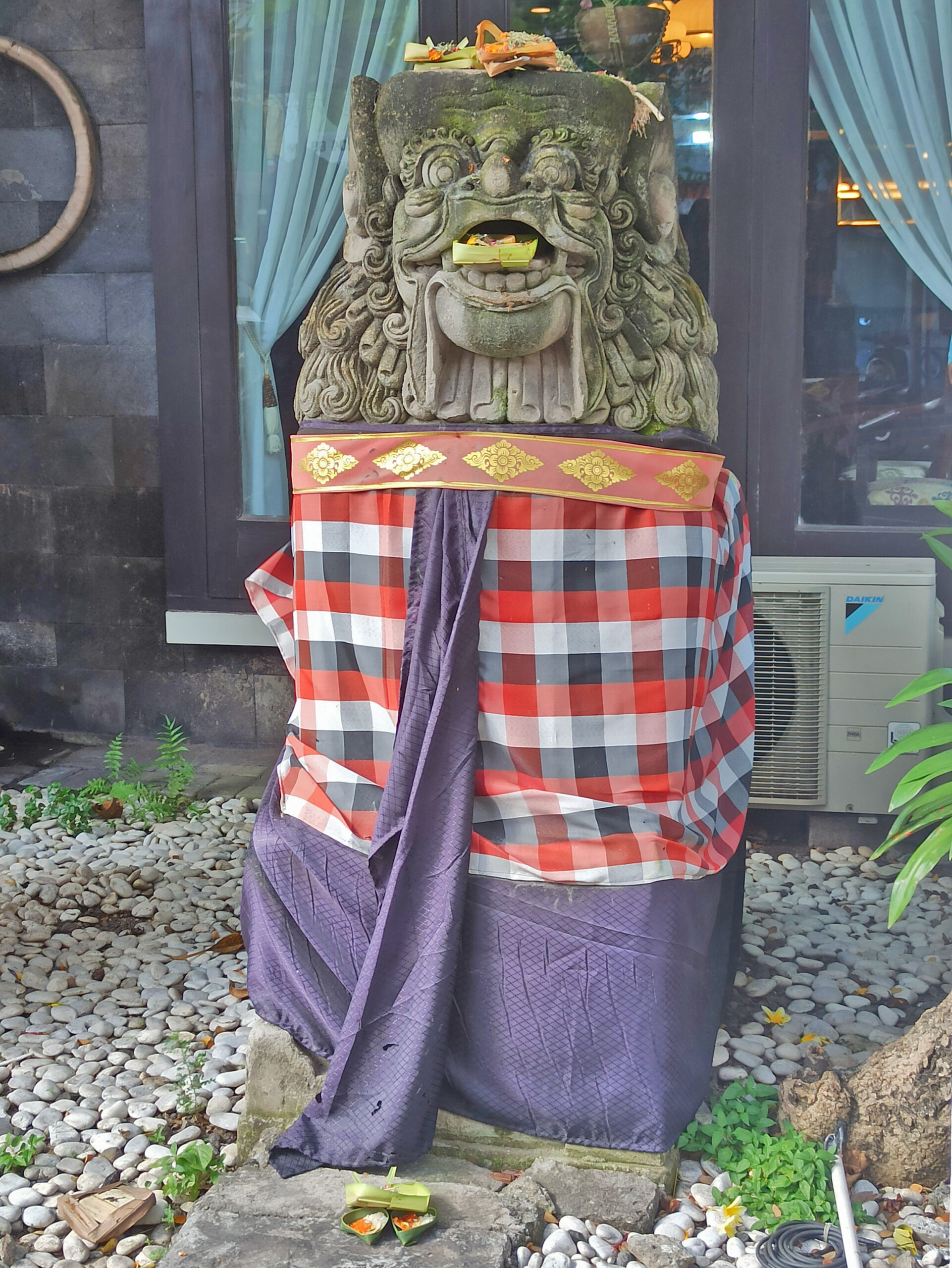Every Monday at No Work All Travel, I intend to write about something that many of us have passed by while touring around, yet might not fully appreciate the significance. It might be a bizarrely named dish on a menu, an unusual street name, or a statue or sign with profound local impact written in a language you may not understand. That’s language lunes, with lunes meaning Monday in Spanish.
For today’s installment, we’ve got a snapshot from a recent trip to Bali, Indonesia. You might have noticed countless stone guardian statues — called bedogol — dotting the predominantly Hindu tropical island. But have you ever wondered why they were wearing clothing?

Balinese Hinduism is based on the concept of rwa bhineda, meaning “two opposites,” and the desire for harmony. For example, days must include nights, happiness needs sadness, negativity and positivity go hand in hand. That’s where the apparel comes into play.
The textile, called saput poleng (saput = blanket, poleng = two-toned), is most commonly seen throughout Bali in black and white, in other words, a contradiction sewn into fabric. It is worn by Balinese people, as well as placed on trees inanimate objects in which locals believe a spirit resides. However, according to this article, more and more saput poleng are used to dress up bedogol as mere ornaments. (link in Indonesian)
What’s that you ask? Why does this particular saput poleng have more than two colors? Good question. The grey represents the transition between two opposites, and the red is for energy and motion.
Another way to look at the colors of black, white, and red is by learning more about the history of Hinduism, and its tridatu, or “three powers.” Brahma, the creator, is symbolized by red, whereas Siwa, the destroyer, in white, and Wisnu, the preserver, is black.
Have you ever visited Bali? If so, did you ever notice the saput poleng?

Leave a Reply